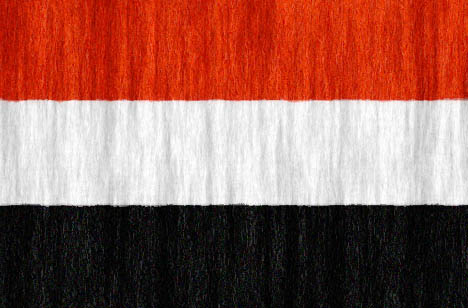AFP/Sanaa
A year after overrunning Sanaa, Yemen’s Shia Houthi rebels have managed to remain in control of the capital despite months of air strikes waged by a Saudi-led coalition.
The Iran-backed rebels occupied Sanaa unopposed last September 21 following months of clashes with tribes and Sunni militants in northern regions.
They went on to expand their hold over several Yemeni regions, backed by renegade troops loyal to ousted president Ali Abdullah Saleh.
In March, however, their advance on the southern port city of Aden, where UN-backed President Abd-Rabbu Mansour Hadi had taken refuge before later fleeing the country for Riyadh, triggered a Saudi-led air campaign.
Loyalists backed by coalition air strikes and troops freshly trained and equipped by the coalition in July managed to push the rebels out of Aden and four other southern provinces.
Pro-Hadi fighters and coalition contingents with their sights set on Sanaa are engaged in operations to seize the province of Marib, east of the capital.
But analysts say the battle for Sanaa has yet to bear fruit.
“A collapse of the Shia militants’ authority is far from imminent—or guaranteed over the medium term,” said Jordan Perry of the UK-based risk assessment group Verisk Maplecroft.
“A year after seizing control of the capital, the Houthis remain well-entrenched in Sanaa.”
The rebel seizure of the city brought to a halt a long political process aimed at drafting a new constitution and reshaping the impoverished republic into a federation of six regions.
The Houthis, who had traditionally complained of marginalisation, were official participants in the national dialogue, but they also opposed the proposed division of the country.
They began their campaign under the pretext of fighting against corruption and confronting Al Qaeda militants who had taken advantage of the lawlessness to strengthen their presence in Yemen.
“After a year of open conflict, everyone is losing,”said Mathieu Guidere, an Arab geopolitics expert at France’s University of Toulouse.
“The Houthis and their Saleh allies have demonstrated their limitations, while the coalition has been forced to operate increasingly on the ground,” he said.
Al Qaeda militants have also been “outpaced by those of the Islamic State group”, he added, referring to a significant rise in attacks claimed by IS in a country where Al Qaeda’s most dangerous branch remains active.
Meanwhile, the population has borne the brunt of the Yemen conflict and been “taken hostage” by different sides, Guidere said.
Calling it a “humanitarian catastrophe”, the United Nations has said that since March, the average day in Yemen sees 30 people killed and 185 wounded, among them many civilians.
The coalition has also suffered increasing human losses since it sent in ground forces, including 67 Gulf soldiers killed in a single rebel missile strike in Marib province on September 4.
The progress of the ground attack begun in Marib on September 13 is “slow but sure”, according to one source from the coalition, which is estimated to have sent in 5,000 soldiers, mainly from the United Arab Emirates and Saudi Arabia.
Prime Minister Khaled Bahah returned on Wednesday to Aden, accompanied by several ministers, after spending six months in exile, but his government faces huge security challenges.
Al Qaeda is believed to have strengthened its positions in the port city and is already suspected of acts of violence including an arson attack on one of a handful of churches that had remained open in Aden.



